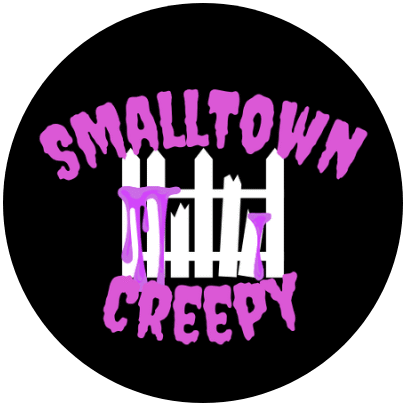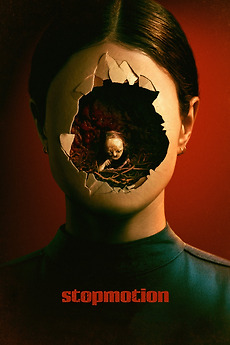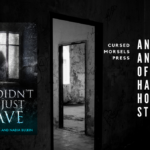All I knew about Stopmotion as a movie was that it blended stop motion animation with live action and that the figures in the story were wonderfully creepy. While that is all true, it is also a heart rending story about what it means to take control of the narrative of your life and how far an artist is willing to go for their work.
Content Warnings: parent death, child death, self harm, animal death, mental health issues, gaslighting and emotional abuse by loved ones.
Ella Blake, a stop-motion animator struggling to control her demons after the loss of her overbearing mother, embarks upon the creation of a film that becomes the battleground for her sanity. As Ella’s mind starts to fracture, the characters in her project take on a life of their own.
First and foremost, Stopmotion is a fairy tale. Ella is the abused ash-child archetype that carries the burdens of those around her. However, unlike a fairy tale, the characters of the wicked stepmother and stepsisters are her real mother, her boyfriend, and his sister. She then enters an initiatory experience that begins with her longing for more and her mother falling ill. With this newfound freedom from one of her abusers, Ella is inspired by a precocious unnamed child to create something new. This decision leads her into a dark initiatory experience of fairy tale and art that has an outcome just as dark and embroiled in metaphor.
Sound convoluted? I apologize but Stopmotion is definitely one of those movies steeped in metaphors and layers of storytelling. Sure, you could go in and watch it with just the surface level creepiness and assume its about a woman that loses her mind and believes her creations are taking over. It would still be worth the watch but I do ask you to allow it to cut deeper than that.
Why do I start with the fairy tale and mention initiatory experiences? Because, for me, as a practicing witch, they are both entwined. See the story of Cinderella, The Little Mermaid, Vasilisa the Beautiful, and more – all stories about a girl who is abused, is catalyzed but a drastic change to reach for what she wants, is put through harrowing experiences by strange supernatural forces, and in the end is different than she was before. Now, take that and recall that this is a horror movies. Horror transgresses the hero’s journey tropes and says “rather than becoming better, the hero/story could become worse.”
Abandon Hope All Ye Who Enter Here – aka Spoiler Warning
If you want a review that will talk about how cool it is this movie was shot in 25 days followed by the creator working with no budget in their house in post production to make a beautiful movie with great acting, cinematography, and more – please go check out another review. There are lots out there I assure you. From here I want to discuss fairy tale, initiation, psychology, and the Stopmotion story in detail. Its a long one and full of spoilers. This is your only warning.
Dissociation and cPTSD
We start off with Ella being in an abusive situation with her mother who, though she relies on Ella to be her hands with her work, is condescending and demanding. When Ella suggests giving ideas for the stop motion movie they are making together, the mother is harsh rather than supportive and this blocks Ella in her ability to be creative. When her mother has a stroke, Ella is finally free to either continue her mother’s work or make something of her own.
The abuse is evident – emotional and psychological but still obvious in the interactions Ella has not only with her mother but with her boyfriend who belittles her or his sister who uses her for her own work in the commercial field. Then we get to how Ella deals with trauma and abuse – dissociation.
Dissociation is a mental process of disconnecting from one’s thoughts, feelings, memories or sense of identity. We see this start when Ella blocks out the world around her so all sound and voices are muffled and far away. Her face gets a thousand yard stare and she is either very still or working in what looks like her own little world. What some might call “spaced out.” Later is shows up in loss of time and memory as well as inability to ascertain what is real. Lastly, that break from reality is shown when Ella no longer sees people around her as humans but as puppets themselves and even moving them creates the same sound as the armature in her stopmotion puppets (I loved this effect by the way).
As someone who has experienced child abuse by a parent and has cPTSD and also has dealt with dissociation to cope, I clocked this right away. It was well done and very realistic to the point that I immediately connected with Ella and felt like the writer was empathizing with my own experiences on an intimate level. While this sounds warm and fuzzy, it actually has an unnerving quality of being perceived despite not being on screen myself. What I mean is that it added to the unnerving discomfort the movie created.
The Mother vs The Inner Child
While free from her mother physically, Ella is not free from the effect her mother had on her. Alone with her own decisions, she seems unable to do the work despite her decision to do so. This is when an unnamed precocious (read bratty) child forces her way into Ella’s life.
The physical similarities between the child and Ella are too striking to ignore. They could be sisters and I immediately clocked that this child is not external but a personification of something going on in Ella’s head. It didn’t take long for me to see that this was Ella’s inner child.
Psychologically, our inner child will “act out” in our lives when they are not being taken care of. This is usually the result of us being neglected or abused as children and forcing us to grow up faster than we were mentally/emotionally prepared for. As a result, parts of us inside will require attention or else rebel. In real life this can look like clinginess, fear of rejection causing us not to attempt things, inability to commit or focus on certain tasks, etc. In the movie, it looks like a grown woman looking for external validation and a little girl forcing her way into rooms, being loud with repetitive vocal stimming, tossing trash onto the floor for others to deal with, and demanding attention and that her desires be met immediately. Both are signs of a person who was not nurtured during their formative years to create a healthy mental foundation.
I loved the use of the child to make the story. She immediately wants to do things her own way – not her mother’s way and through her demands gives Ella the permission she longs for to create something that is not her mothers. Like a child, the story is a fairy tale – something that children can grasp and hold onto for its simplicity but, again this isn’t a child but a psychological personification of an adult, so it has deeper metaphorical meaning for the adult.
To me, as an artist and as someone healing from cPTSD, it made sense that healing and working with the parts of the self that were neglected would allow for creation to flow.
Taking Control of the Narrative
Here’s where things go awry.
Yes, Ella is making something new but because she hasn’t healed from the abuse of those around her, she and her inner child are still working with in the broken reality of her mental un-health. The story, her creation, is still being controlled, in a way by her mother through the woman’s lack of nurturing and training.
There is a scene in the movie when Ella is having a discussion with her mother. This discussion is surreal so may only be taking place inside of Ella’s head. In this situation, it doesn’t make it any less real than the other horrors she is experiencing. The thing I want to focus on, however, is not whether or not its happening but the driving theme brought up in the scene. The mother tells Ella she is only a puppet (reiterating her pet name for the girl, poppet [this caught me off guard because my mother called me that too so you can imagine my response to the movie because of it]) and that she can’t control the story/narrative.
Why can’t Ella control it? Because her mother never taught her how. Her mother only trained her to be hands, a tool, a puppet. She never taught her how to create for herself or traverse the winding roads of her inner landscape.
Ella might scream and rage that this story is her movie, might lash out and try to take control of the narrative again and again (refusal to do the work, fighting the Ash Man, running, suggested suicide, even attempting to kill her inner child) but because she is still responding to the pain her mother created in her, the whims of her stunted inner child, and the expectations of those in her life, she can’t. She keeps traveling that same road, that same ingrained neural pathway, towards self destruction.
The Ash Man as Shadow
The child isn’t the only part of Ella’s personality that is personified in the movie. The Ash Man, the movie’s monster, is also a figure from within Ella’s subconscious.
The Ash Man is Ella’s shadow self. The concept of the shadow self was popularized by Jungian psychology. Its the part of ourselves that holds the things we are ashamed of, avoid, and don’t want to admit is part of us. This could be our capacity for violence, hatred, prejudices we have, and other things to be ashamed of. It could also simply be things we’ve been told aren’t ok but are actually not harmful – like ambition and making yourself a priority.
When we ignore the shadow and the things within it, it, like the inner child, will lash out and take control of the narrative. It will come out when we lose control of ourselves – when we are scared or angry especially. It will form intrusive thoughts, cause you to lash out, and make those parts of you become evident in your words and actions. Its like the more you want it to go away, ignore it, try to hide it, the stronger it gets. The boogeyman in the closet of your mind.
The only way to deal with the shadow, according to Jungian psychology, is to embrace it. This doesn’t meant let violence, bigotry, etc run rampant. Rather it means to face it, accept that this is part of you, self analyze why it is there, and then let that shadow part of you know that it is accepted, safe, and forgiven for its faults. It means that you accept yourself and forgive yourself for your short comings. Easier said than done, of course.
In the movie, the Ash Man comes again and again, forcing his way into Ella’s movie but also into Ella’s life either externally as the monster chasing her down or internally through her own erratic behavior.
Fairy Tale as Ritual
Now that we’ve delved into the psychology of the movie, lets play with the messy, bloody thing that is the fairy tale aspect and how that correlates to initiatory rituals.
The Story – one upon a time there was a girl, lost in the woods. She’s running from the Ash Man. The man no one wants to meet. She finds a house and hides in it. He comes three nights. The first night, he sees her. The second night, he touches her. The third night, he eats her up.
The magic of the number 3 – The Ash Man comes three nights in a row. 3 is a number that is prevalent in fairy tales. In the original Snow White, the wicked queen comes to Snow White 3 times. First with a corset or bodice that squeezes the air out of her. Second with a poisoned comb. Third with the poisoned apple. Its the third time that does the trick.
3 is important because it is the smallest recognizable pattern. This makes for a story to be easy to remember when fairy tales and the like were primarily or solely an oral tradition. Vladimir Propp was a Russian folklorist and linguist identified this basic and fundamental rule of narrative structure that he called ‘trebling’. In fairy tales like the one in Stopmotion, the three trials that increase in difficulty is part of an ancient universal idea – Omne trium perfectum (everything that comes in threes is perfect).
However, this is horror and like the dark stories of Brother’s Grimm, the perfection here isn’t a the victory of Disney fairy tales. In red riding hood, the magical 3 comes up when Red Riding Hood approaches the disguised wolf. Grandmother, what big eyes you have. Grandmother, what big ears you have. Grandmother, what big teeth you have! In the traditional story, red is gobbled up by the wolf, the end.
In magical systems varying from ceremonial magic to traditional witchcraft to neo-paganism, the number three is sacred. Its associated with magic itself and initiation among many other things. It is the number connected to gods of magic like Hekate who reigns over crossroad decisions, initiations, and darkness, monsters, and the dead that roam. Perhaps the dead that Ella manipulates for her art as well? Who knows.
The Dead Fox – foxes are trickster entities. Tricksters have a long mythological history around catalyzing stories and journeys, being psychopomps (aka guides for the dead and traveling between worlds), and leading people through imitations. Foxes are also related distantly to wolves – adding to the red riding hood element. Its a good totem for many magical practitioners to have but one that cannot be controls. A fact that adds to Ella’s inability to take control of the narrative she is in.
Transmutation – Lastly, I keep bringing up the concept of initiation. This might not jive with some people’s view of the movie given that Ella dies and goes back in the box – a fate predicted by her mother. How can she be initiated and not grow and move on, become more powerful after the ritual is done? One could give the flippant remark that death itself is a journey onward perhaps to more power and so on. I won’t do that though. Instead I want to focus on Ella’s goal – and the goal of the inner child.
Ella’s goal was to tell a story different than her mother’s. Her inner child then takes the reigns, lashing out at the constraint she’s been put under. She catalyzes the fairy tale ritual. The three stages of change and transformation – being seen, being touched (and fed the blue egg which I will get to), and then being consumed. During this time Ella’s dissociation from reality worsens and she also starts seeing her own body change – turning into the morticians wax she makes her figures with.
The transmutation is complete when Ella gives in and removes her waxy face to feed to the Ash Man. If the Ash Man is her shadow, it is Ella giving up her identity to her shadow self and letting it take control.
But why do all of this? For art. Ella is an artist and the art itself is her priority. More than work and money, more than her relationships (as sketchy as they are), and more than her own well being – the art is the most important thing.
I say all this because at the end, after undergoing the transformation into her art itself (the bloody cutting and turning into wax and so on) she achieves her goal and transcends it.
Transcendence comes with death, sure, but it also comes with embracing the desire of her inner child and the rampage of her shadow. It comes with the acceptance of being a tool, a puppet, while also being the creator.
We see that transcendence in her smile as she looks at what she has created – the movie and herself. The disappearance of the Ash Man who has been embraced and integrated. The companionable nod between her and her inner child who is now calmed. The acceptance of the box (death).
While not a “happy ending” in the traditional sense, it is, in a way, a happy ending for Ella. This could only be done through the ritual of the fairy tale, its gates or trials, and dealing with the gatekeepers (her relationships, her inner child, her shadow, and her own physical limitations). In magical practice, going through these gates can also be harrowing and test a person’s psychological, emotional, mental, and physical limits. It is through these tests do we achieve our higher goals.
What the fuck is the Blue Egg?
In an interview for Polygon, Robert Morgan was asked about the blue egg and what it symbolized.
“It’s mysterious. I can’t really talk about it. For me, it has something to do with death, and something to do with creativity. That’s all I can say about it. So watch the film again!”
The blue egg made me think of another ritual metaphor – The Orphic Egg. When I was doing ritual prep work for my Communion with the Holy Daimon ritual (aka Communion with the Holy Guardian Angel that Aleister Crowley and other ceremonial magicians often discuss) one of the meditative rituals I did was called The Orphic Egg. I had to carry a raw egg in my hand for 24 hours without breaking it. The idea is, anyone can have the strength to destroy and crush the egg. Do you have the strength to nurture it and keep it intact and safe for something to hatch? Its a lesson in patience, endurance, and doing what you must to achieve your goal even when the trial is tedious and distasteful.
I thought about this for Ella. She’s forced into a ritual narrative that she has no ability to gain control over. Instead she must get through it despite how difficult, painful, and distasteful it is. Does she have the endurance and strength for that?
I doubt this is what Morgan intended for the blue egg. I plan to revisit the movie and study it for deeper meaning. However, at this time, the blue egg is the Orphic Egg for me.
5 Stars
If you made it this far, wow. I really don’t expect anyone to read my ramblings about witchcraft and metaphors but those who do and derive any entertainment or meaning from them, thank you. I really do appreciate you.
Stopmotion is a beautiful, eerie movie that spoke to my soul. I love it very much and it is an example of why I love horror.
Recommendations
Fans of May (2002), dark fairy tales, and quiet psychological horror with plenty of blood will love Stopmotion.




I heard that movie is just strange. Thanks for sharing.